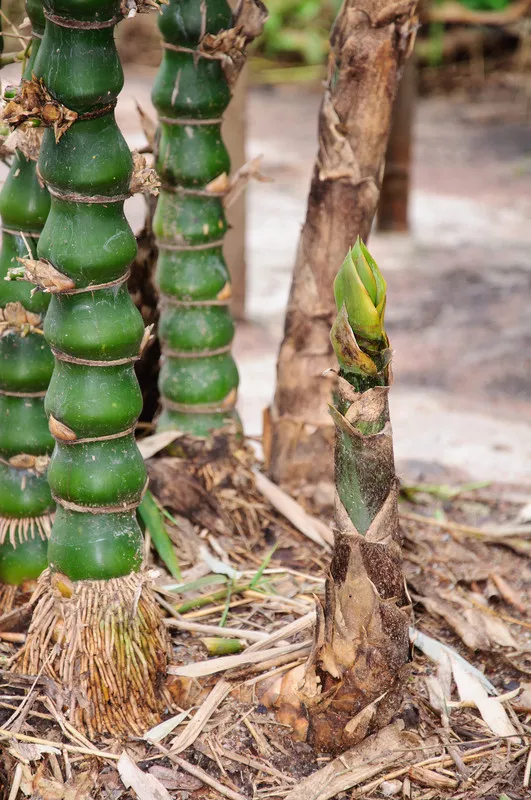- Why aphids and ants attack bamboo together
- Where scale insects hide
- Mealybugs and mealybugs prefer fargesia
- tips and tricks
It is always the same bamboo lice and aphids that infest the leaves and stalks of the bamboo plants from March. Here you can learn more about the most common types of lice and methods of reliably getting rid of them on bamboo plants:

- Aphids Aphidoidea
- scale insects
- Mealybugs and mealybugs
Why aphids and ants attack bamboo together
Aphids attract ants with their sweet excrement, which they like to eat. For this, the ants protect the aphids and eagerly breed them. To do this, they transport the sucking insects to uninfested bamboo leaves and stalks.
Aphids use their proboscis to tap into the plant's pathways. This deforms the leaves and causes discoloration. In extreme cases, parts of the bamboo will dry up and die. Sooty mold usually settles on the excreted honeydew. They cover the leaves with a black coating. It is advisable to destroy the bamboo to protect other plants from the virus attack.
Where scale insects hide
Scale insects cannot be seen with the naked eye. Because they hide under their brown protective shield. They mainly infest the bamboo stems and suck out the plant sap. The robust bamboo plants only react visibly when so much plant sap has been sucked out that parts of the plant die off.
Conventional sprays cannot reach scale insects hidden under their protective shield. Only agents such as plant protection sticks, which are stuck into the ground and distribute their active ingredient over the roots, are also effective where no spray can get to. Dried up signs indicate dead scale insects, but give way to living ones.
Mealybugs and mealybugs prefer fargesia
Like all bamboo lice and aphids, mealybugs and mealybugs suck the sap from bamboo plants. As evidenced by sticky juice residues on leaves and stalks. They also form whitish cotton balls that can be found on the petiole. The white, light brown patterned lice under the culm sheaths can be found particularly on Fargesia.
Regular preventive measures help to avoid bamboo pests and bamboo diseases. One of the most permanently effective and natural lice killers is to settle useful opponents in the bamboo garden such as:
- ladybug
- catchy tunes
- hoverflies
- lacewings
- parasitic wasps
Also important: Spray bamboo regularly with a hard jet of water, targeting the underside of the leaves to wash away the vermin.
tips and tricks
Organic lice killer recipe - fill buckets with horsetail or stinging nettles, cover with water and leave to soak. After one day the biological lice killer is ready. Spread undiluted on the bamboo with a plant sprayer. Repeat application often.